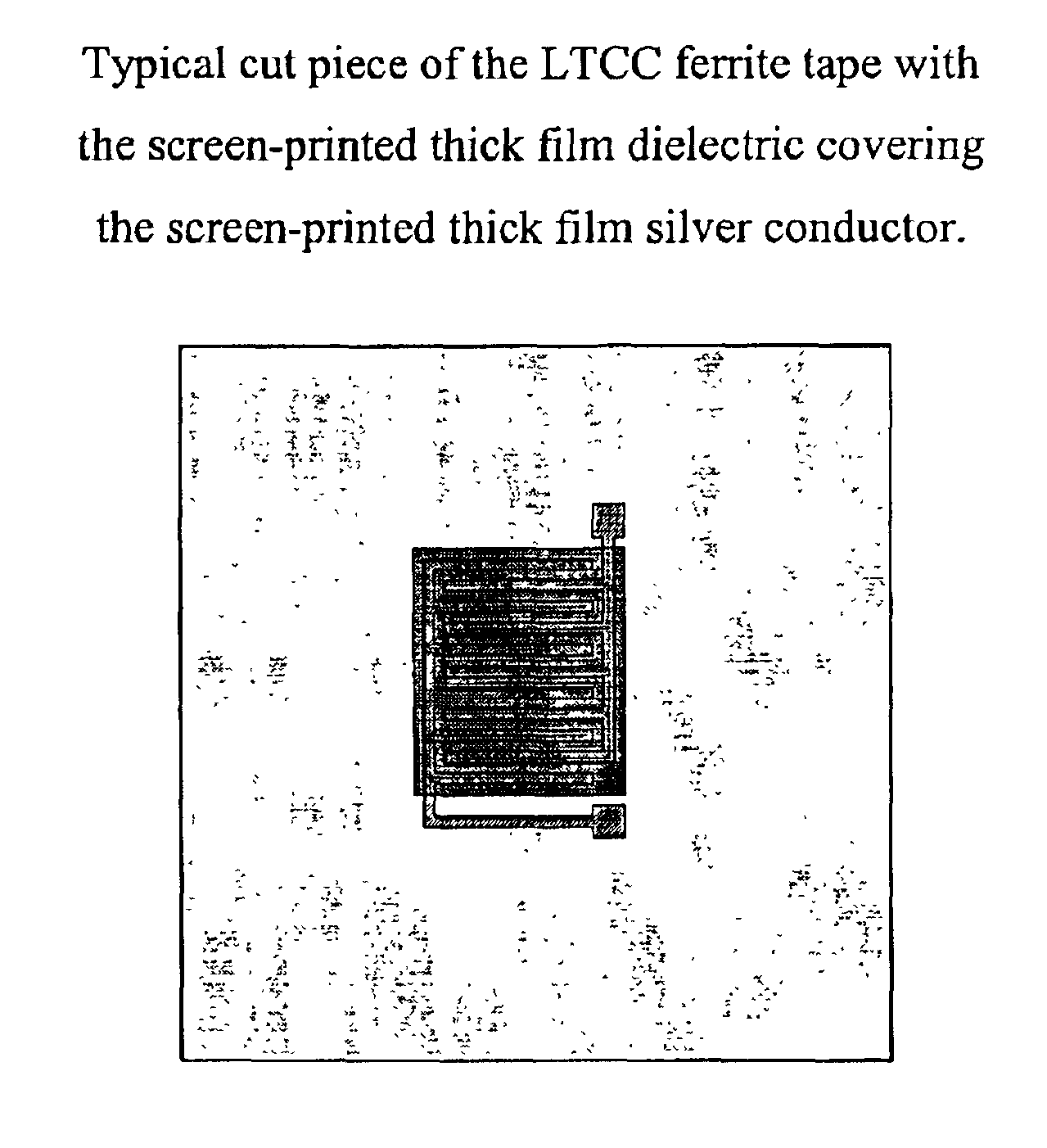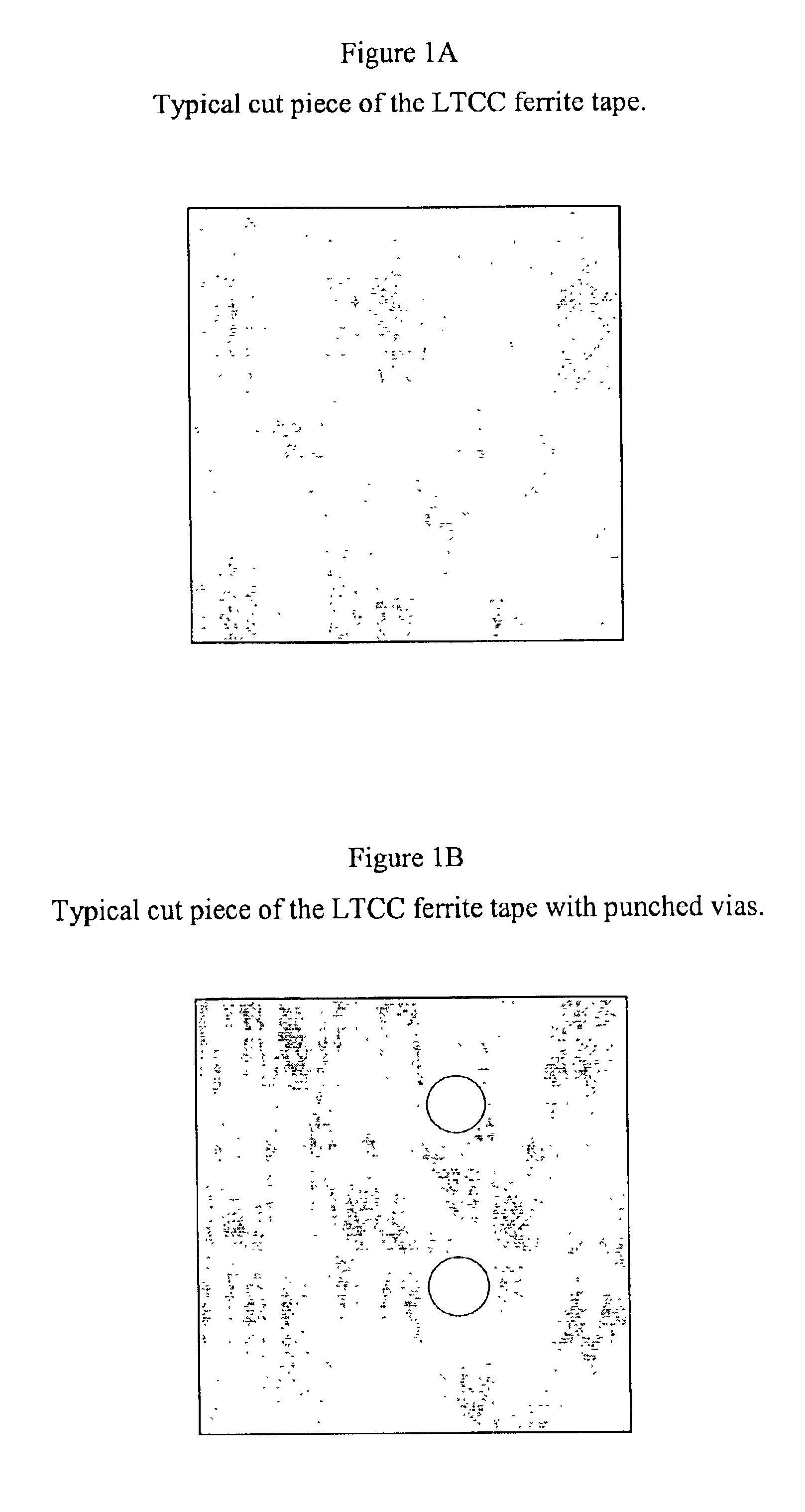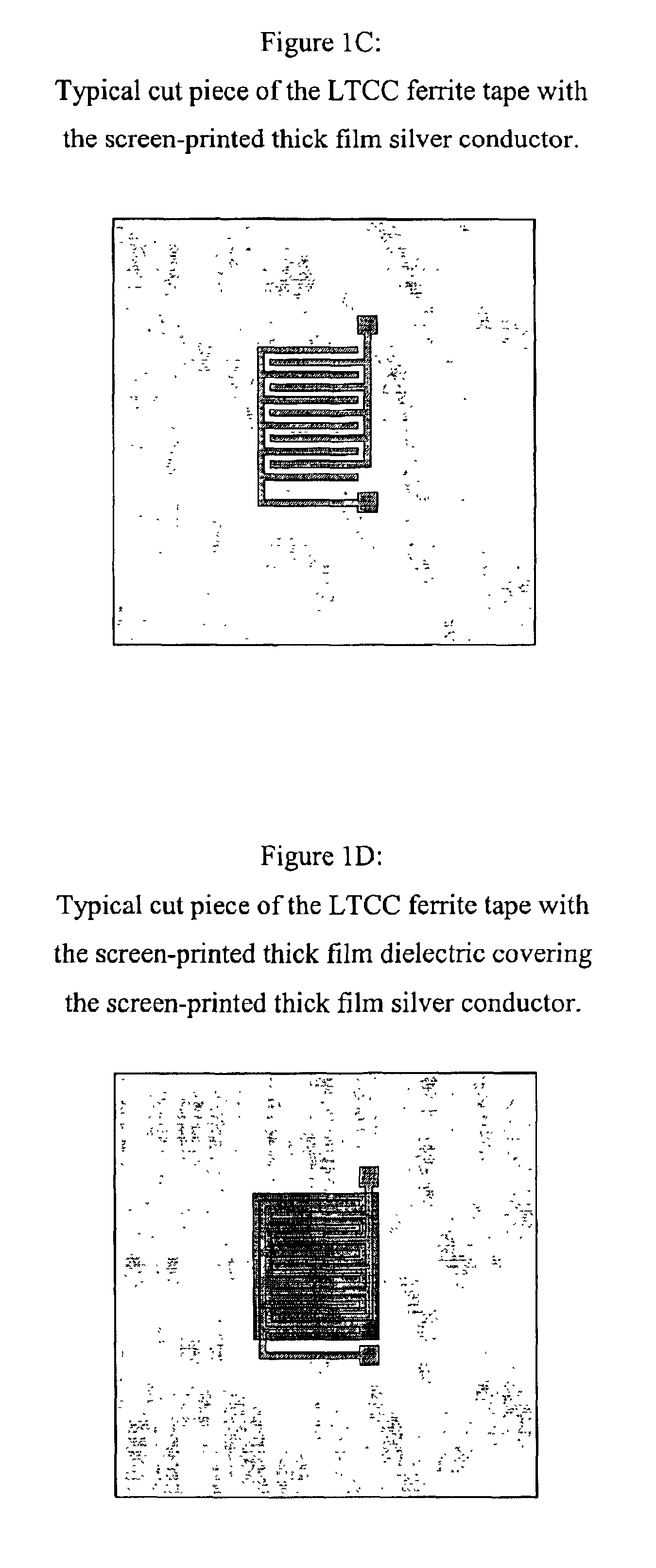Materials system for low cost, non wire-wound, miniature, multilayer magnetic circuit components
a technology of magnetic circuit components and materials, applied in the direction of magnetic materials, magnetic bodies, inductances, etc., can solve the problems of inability to automate the coil winding process for such very small components, inability to meet current trend of increased functionality, and inability to manufacture such very small components. , to achieve the effect of enhancing the magnetic coupling coefficient, and enhancing the dielectric characteristics of interes
- Summary
- Abstract
- Description
- Claims
- Application Information
AI Technical Summary
Benefits of technology
Problems solved by technology
Method used
Image
Examples
example 1
Preparing a Component
[0119]A non-wire wound, miniature, multilayer magnetic circuit component was constructed using the starting materials and techniques described herein. The component contained ferrite tape, thick film buried silver conductor, thick film via-fill silver conductor, thick film solderable top layer silver conductor and thick film dielectric. Following table lists the sequence of processing steps used and describes the layer-by-layer design of the multilayer component. (In an actual device, there may be circuits on several layers. The examples of devices disclosed below had circuits on only one layer or on none of the layers, since they were used for testing purposes only.)
[0120]
Multilayer partfor evaluatingthe effect ofMultilayer partthick filmfor testingdielectric onToroid fordielectricthe dielectrictestingproperties ofproperties ofProcessingmagneticthe ferritethe ferritestepspermeabilitytapetape1st step: cut10 pieces,10 pieces, each10 pieces, eachthe ferriteeach 1 ...
example 2
Firing the Component
[0121]A green multilayer package or magnetic component fabricated from the materials system of this invention can be fired using the following typical firing profile. Starting at room temperature, heat at a rate of 1° C. / min to 3° C. / min to the burn-off step temperature in the range 400° C. to 500° C. Hold at this burn-off step temperature for a duration of 15 minutes to 2 hours to facilitate optimum burn-off. Then continue heating at a rate faster than 4° C. / min to the peak firing temperature in the range of 850° C. to 950° C. Hold or soak at the peak firing temperature for duration of 15 minutes to 4 hours depending on the desired properties for the finished or fired multilayer package or magnetic component. The preferred firing profile for the materials system of this invention is as follows: Starting at room temperature, heat at a rate of 2° C. / min to the burn-off step temperature, 450° C. Hold at 450° C. for a duration of 2 hours. Then continue heating at a ...
example 3
Testing Magnetic Permeability of Toroid
[0123]In this embodiment the magnetic permeability, μm is measured using a toroid fabricated from a multilayer laminate of the LTCC ferrite tape. Ten layers of the LTCC ferrite tape are laminated and by means of a punch and a die set a green multilayer ferrite-ring with an inside diameter of 0.25 inch and an outside diameter of 0.625 inch is fabricated and fired to form the magnetic core for the toroid test part. The three dimensions, inside diameter, ID, outside diameter, OD and, thickness, t of the fired ring are recorded. Next, ten loops of an insulted wire are wound around the ring to form the toroid test part. An insulated wire, 26 AWG solid silver-plated OFHC copper 0.0055 KYNAR is used for the toroid windings and to facilitate electrical connection to the test equipment. The inductance, L of the toroid test part is measured with Wayne Kerr (West Sussex, UK) Precision Magnetics Analyzer, Model PMA 3260A, operating at 10 mA, 500 kHz. The m...
PUM
| Property | Measurement | Unit |
|---|---|---|
| weight % | aaaaa | aaaaa |
| weight % | aaaaa | aaaaa |
| softening point | aaaaa | aaaaa |
Abstract
Description
Claims
Application Information
 Login to View More
Login to View More - R&D
- Intellectual Property
- Life Sciences
- Materials
- Tech Scout
- Unparalleled Data Quality
- Higher Quality Content
- 60% Fewer Hallucinations
Browse by: Latest US Patents, China's latest patents, Technical Efficacy Thesaurus, Application Domain, Technology Topic, Popular Technical Reports.
© 2025 PatSnap. All rights reserved.Legal|Privacy policy|Modern Slavery Act Transparency Statement|Sitemap|About US| Contact US: help@patsnap.com



